'Take prompt action at the first sign of trouble' – expert tips on dealing with common rose diseases
Learn about 7 of the most prevalent rose diseases and how to minimize their damage to your roses
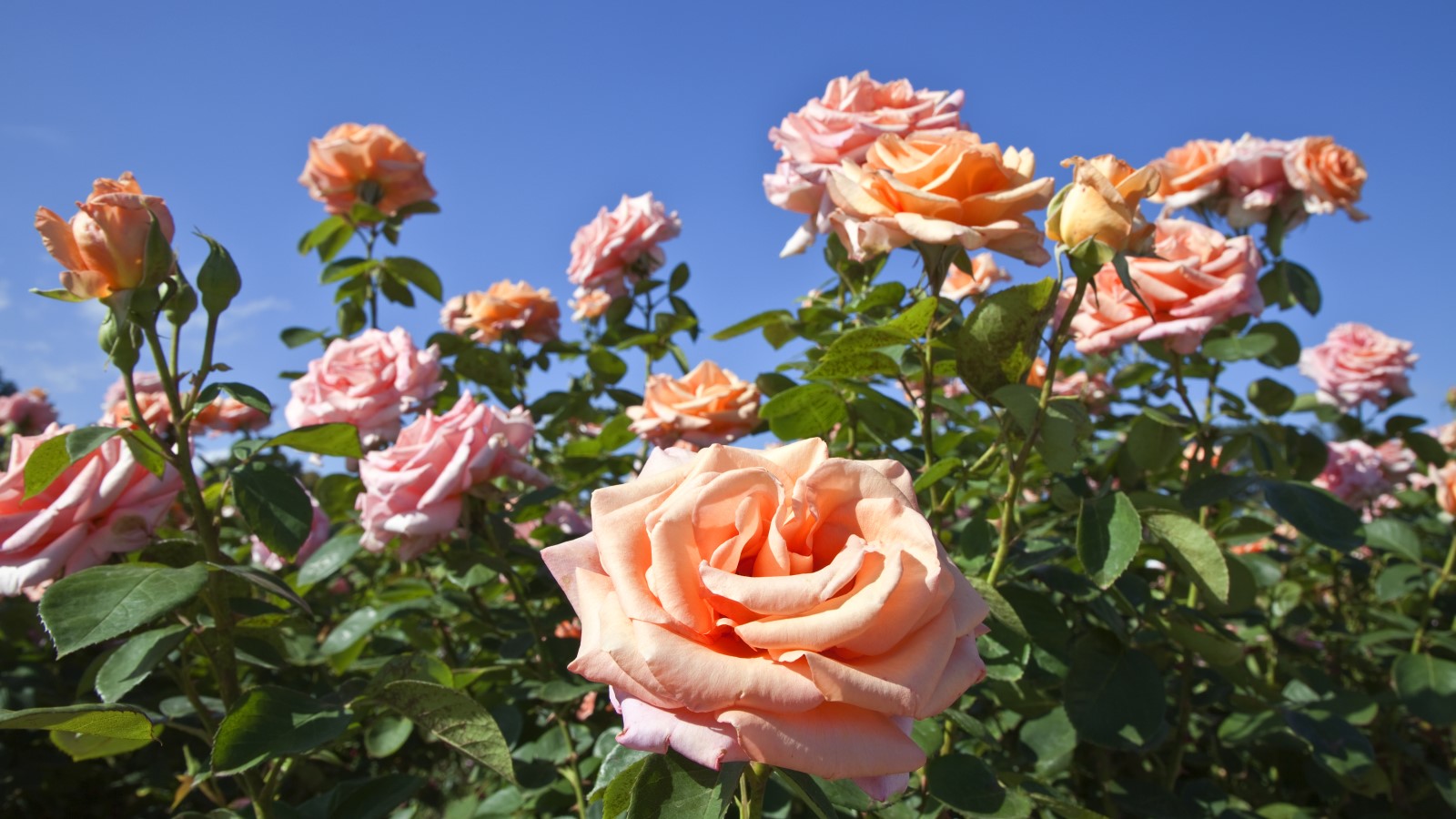

As with all plants, roses can succumb to many diseases and pests. Unfortunately, there are common diseases that target these hugely popular flowering shrubs, which can cause the plants to suffer and deprive us of their stunning blooms.
The likes of black spot, mildew, rust, canker, and botrytis can quickly cause damage. It pays to be able to recognize the signs of these diseases early, as prompt action can be the most effective way to protect your precious roses.
If you are already growing roses, or are thinking of planting roses in your yard, then take time to discover what symptoms you want to look out for, and what action to take, if any of these rose diseases strike your plants.
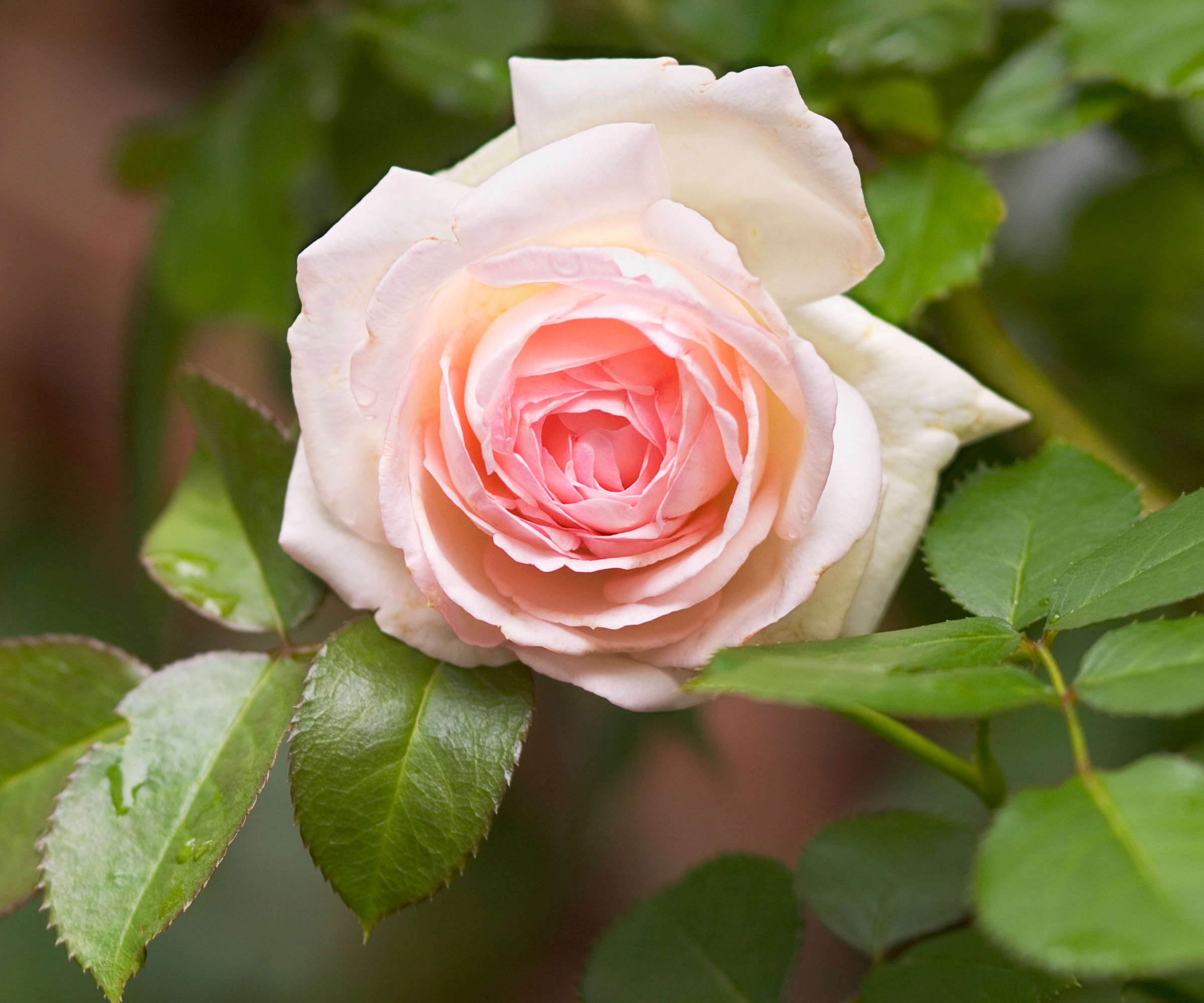
There are more than 150 species of rose globally
Spotting the first signs of roses diseases
There are many diseases that can strike rose bushes and it is all about being vigilant and watching out for the symptoms. Many of the symptoms will be first visible on the leaves or stems of your roses.
Benita Middleton, head gardener at Benita’s Garden Services, recommends that regular inspections together with ‘prompt action at the first signs of trouble’ can help combat many of the most common rose diseases.
‘Signs of rose diseases include leaf discoloration, spots, or patterns, wilting, abnormal growth, and the presence of mold or fungal growth. Leaf drop or defoliation may also occur in severe cases,’ she says.
‘Seeking guidance from local garden centers or professionals can provide specific recommendations for managing pests and diseases effectively. By staying attentive and proactive, rose enthusiasts can preserve the beauty and health of their beloved plants.’
Design expertise in your inbox – from inspiring decorating ideas and beautiful celebrity homes to practical gardening advice and shopping round-ups.
We take a closer look at seven of the most common rose diseases, including the symptoms you want to inspect for, and what action can be taken against the problem. It could be beneficial if you are thinking of rose garden ideas, or planning any backyard landscaping with roses.

Benita is a professionally qualified gardener who runs their own gardening business, Benita's Garden Services. The company has provided landscape and general garden services since 1999 for private clients and business customers. Benita runs a small team of gardeners and shares gardening tips and advice through her website and social media.

Deadheading is an important task when growing roses and can help combat potential diseases
1. Black spot
Rose black spot is a very common rose disease, it is a fungal disease caused by fungus Diplocarpon rosae. The disease will show as circular black spots, which start small and grow to around half-an-inch in diameter. These black spots on rose leaves will be surrounded by a yellow area. The disease can lead to the rose defoliating and it weakens the plants, making them more susceptible to other rose pests and diseases.
Rose black spot is commonly seen in spring and fall, when conditions are wetter, and common garden watering mistakes like overhead watering and splashing the foliage can spread the fungus from leaf-to-leaf. The fungal spurs can also be taken from plant-to-plant on tools, so knowing how to clean garden tools such as pruning shears after any rose pruning is vital.
Gene Caballero, an expert with 20 years of landscaping experience and co-founder of GreenPal, recommends that pruning is a great way to prevent rose diseases from spreading. Any infected leaves need to be destroyed and not put on the compost pile
He adds: ‘A great example of this is a case we handled in which a client's rose garden had developed black spot due to overwatering and lack of sunlight.
‘We pruned the infected areas, adjusted the watering schedule, and within a month, the roses started to thrive again.’
You can get cultivars of roses that are resistant to black spot, however it is an ever-mutating fungus so no long-term resistance can be absolutely guaranteed.
There are fungicides available to use against black spot, such as the BioAdvanced Disease Control for roses, plants and shrubs on Amazon. Alternatively, you can get organic sprays, including Bonide Rose Rx Multi-Purpose Fungicide, Insecticide and Miticide on Amazon.

Gene Caballero, born in Lima, Peru, is a distinguished entrepreneur and co-founder of GreenPal. Launched in Nashville, GreenPal has grown exponentially over the years, now operating in over 250 major markets across the United States.
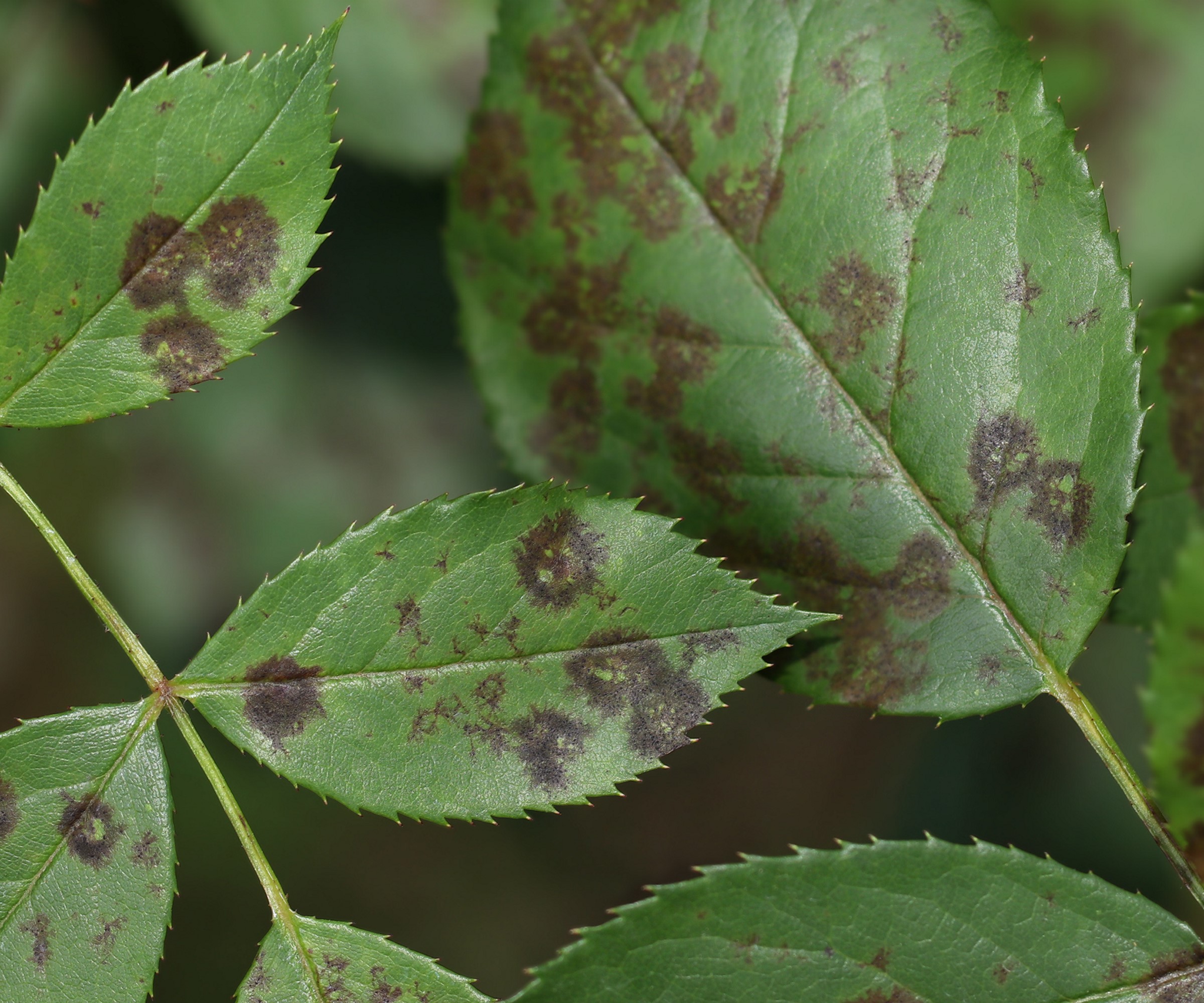
Black spots on rose leaves will start small and grow bigger
2. Mildew
There are two types of mildew on roses, these are ‘powdery mildew’ and ‘downy mildew'. Powdery mildew is caused by the fungus Sphaerotheca pannosa var. Rosae and it will cause a white, powdery coating on leaves, stems, and buds. These leaves and stems can become distorted and it can cause leaves to drop. Powdery mildew is prevalent when temperatures hit around 70 to 80°F.
Downy mildew is less common than powdery mildew on roses and prefers cooler and damper weather. The signs of downy mildew are lesions more dark purple or brown in color on leaves and stems.
There are rose varieties that are resistant, or moderately resistant, to powdery mildew and there are fungicides that can treat the disease. One example is Earth's Ally Disease Control Concentrate, available at Amazon. To prevent mildews, it is recommended to improve air circulation through the rose and also water at the base to prevent wetting the leaves.
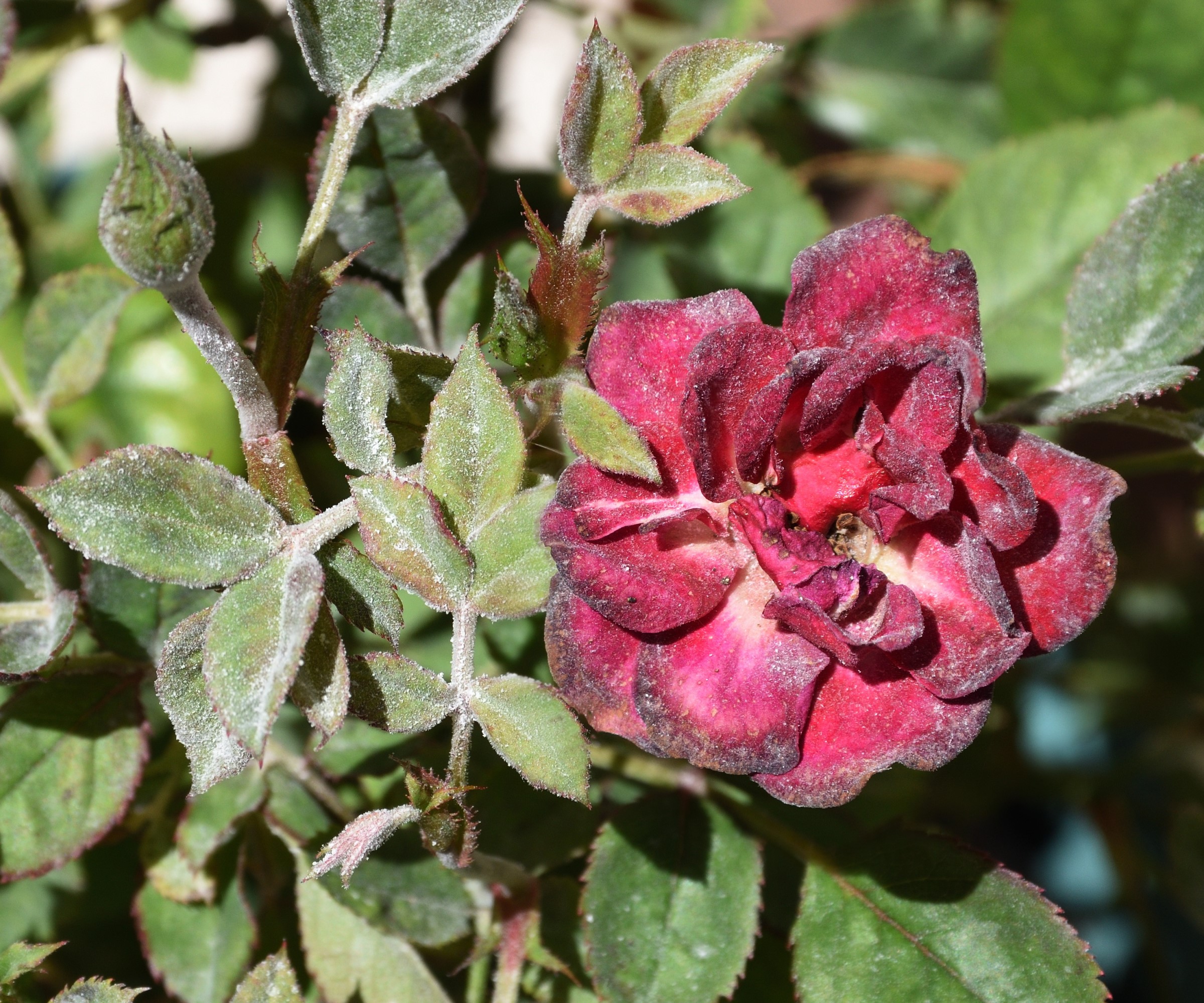
Powdery mildew leaves a white coating on roses
3. Canker
Cankers appear on the stems of rose bushes, looking like dead or discolored areas in tones of brown, black, or grey. They are caused by fungi and can get into the rose canes though wounds, which can be caused by rose pruning, or stems snapping due to winds.
The disease can easily be spread by garden tools, so best practise is to always clean and sharpen pruning shears before cutting and clean the shears when moving between different bushes. The best tactic to deal with cankers is to remove infected portions by pruning well below the diseased area and disposing of the stems.
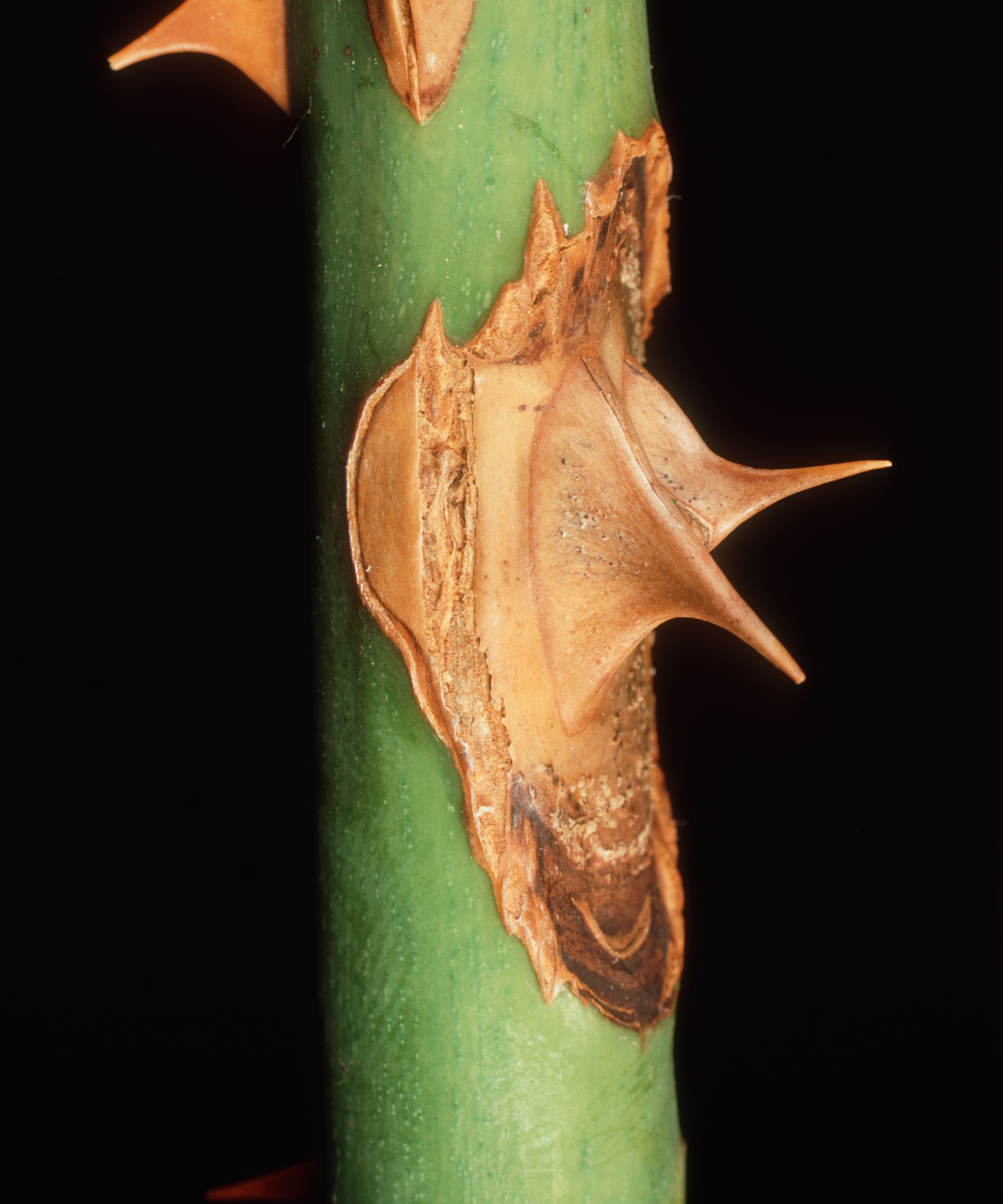
Any rose stems with canker need to be removed promptly
4. Rust
Rose rust is yet another fungus disease that hits rose bushes and it causes orange-colored spots on the leaves, often starting on the underside before spreading to both sides. The spots can go from orange to brown and then to black, eventually causing leaves to turn yellow and then drop.
Monitor plants regularly, so you can pick off and destroy infected leaves at the early stage of infection. Avoid getting the leaves wet and remove any fallen leaves.
Zahid Adnan, a horticulturalist and founder of The Plant Bible, advises that this kind of ‘water management’ can be a vital way of combating many common rose diseases, including rust, mildew, and black spot. He says: ‘Water the soil around the roses, rather than the foliage, to prevent fungal diseases. Avoid overwatering and provide good drainage.’
You can get rust-resistant varieties of roses, and there are common fungicides that can be used against rust. One example is the Garden Safe Fungicide 3 Concentrater available at Walmart.

Zahid is a renowned figure in the gardening industry, with extensive experience and hard-earned skills in horticulture. As the Founder and Editor of ThePlantBible.com, he provides top-tier content and professional advice to fellow gardening enthusiasts on a daily basis. In addition to his work, Zahid manages 10 hectares of agricultural land and maintains an exceptional garden in his own backyard.
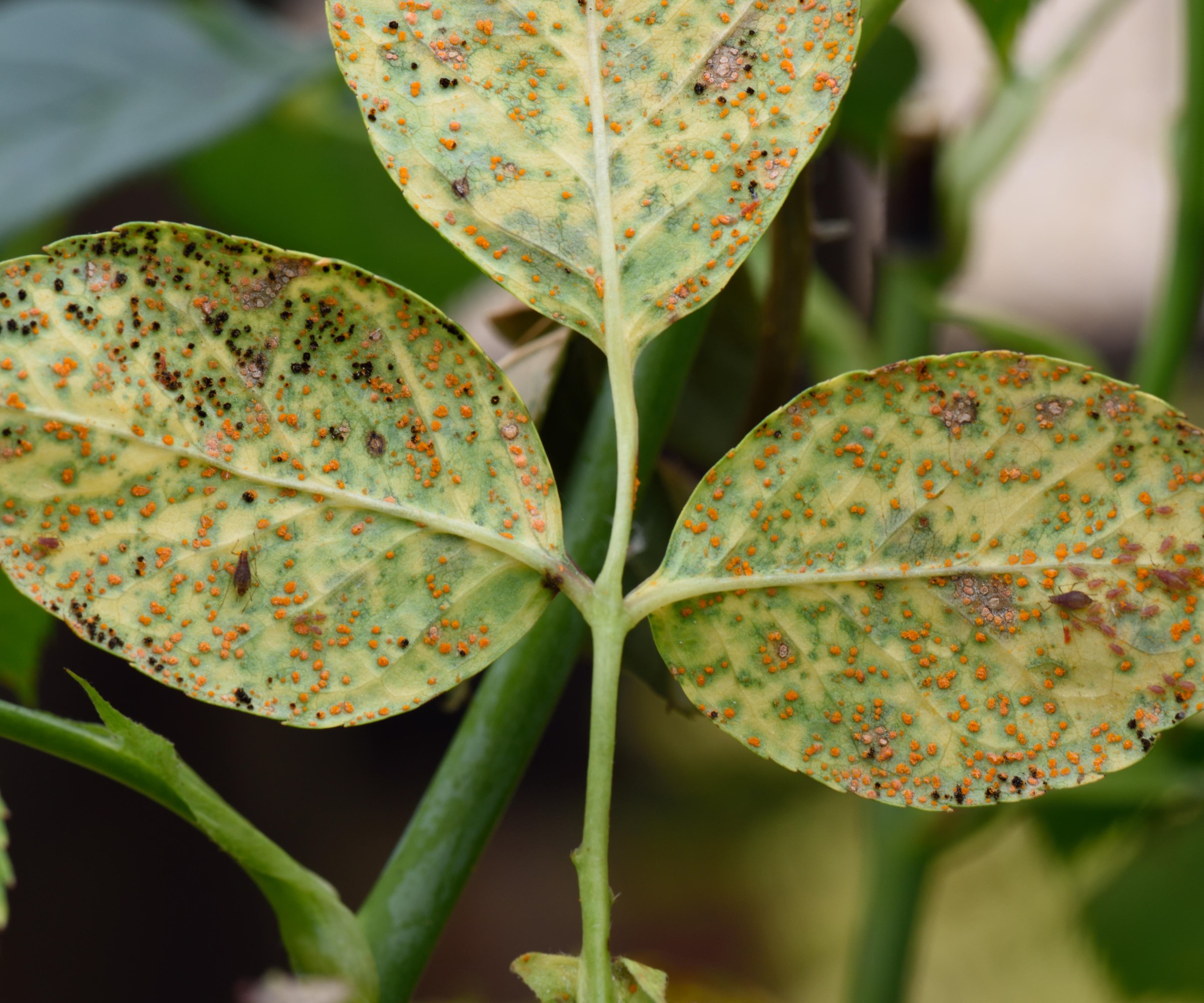
The first signs of rust will show on the underside of leaves
5. Mosaic virus
Rose mosaic virus is not a fungal disease, but a virus that shows its symptoms in the spring. It can cause discolored and distorted leaves, reduced overall vigor of the plant, and a drop in flowering. Unfortunately, there is nothing that can be done for rose plants that have succumbed to mosaic virus. It is a systemic disease from which there is no coming back. Infected roses should be removed from the garden and disposed of properly.
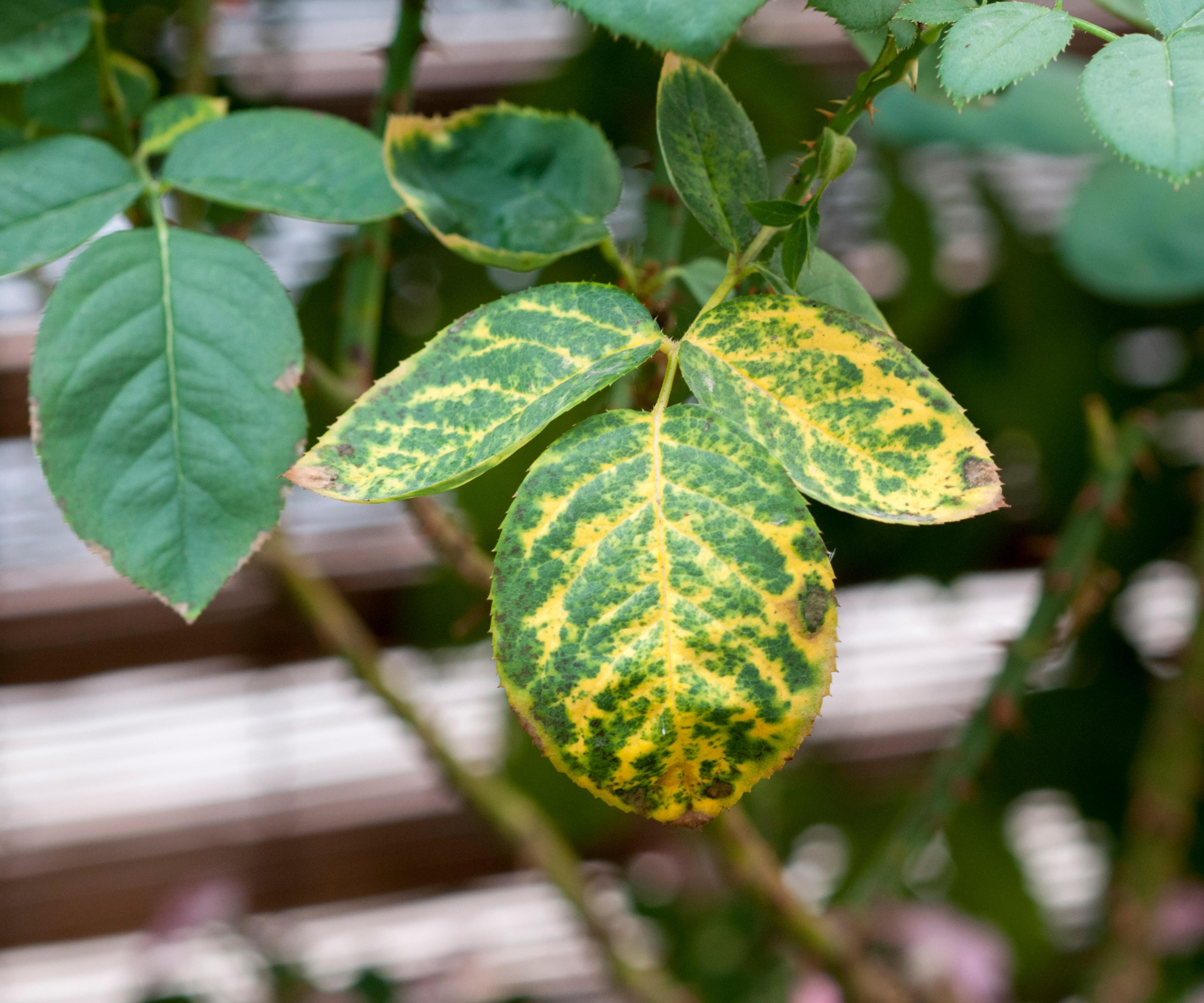
Mosaic virus will cause yellow markings on rose leaves
6. Botrytis
Botrytis is another fungal disease that turns flowers brown and can stop buds from opening. The fungus is most active during a hot and humid summer, so again avoid overhead watering and make sure to check and regularly deadhead roses to get rid of spent flower blooms that can be a breeding ground for fungus.
Take care when you fertilize roses, as giving the plants too much nitrogen can create lots of new growth that is more susceptible to botrytis. Any infected blooms or buds should be removed and disposed of.
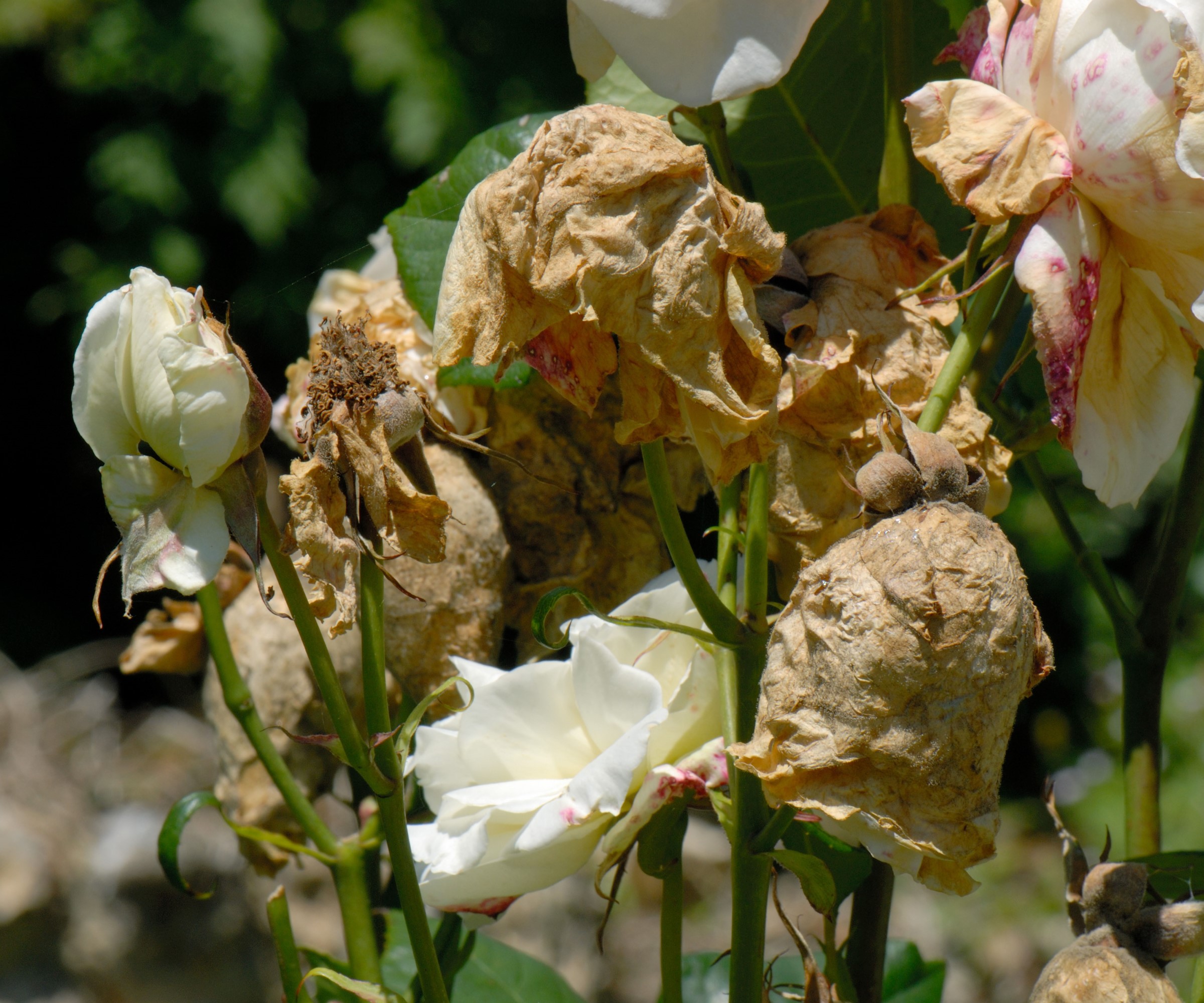
Botrytis can prevent rose buds from ever opening
7. Rose Rosette
Rose rosette disease is a virus that causes strange deformations in the plants stems, leaves, and flowers. The disease is transferred from rose to rose by a tiny mite transported by the wind, people, animals, or tools. The host plant is often an invasive Rosa multiflora and then the mites carry the virus to other roses.
There are many signs of rose rosette disease, including bright red growth that retains its color rather than turning green and branches with excessive thorns. The main tell-tale sign is clusters of shoots that all emerge from one point on the plant.
Unfortunately there is nothing that can be done if a plant is infected. Once it is confirmed that a plant has the virus, the best thing to do is to remove the rose and destroy it.
As there is no cure for the virus, the best way to combat it is to look for resistant varieties and ensure good maintenance of existing roses. By spacing roses out, keeping them healthy and well pruned, and protecting roses from winds, that can go some way to helping prevent rose rosette disease.
Roses are so highly-regarded by gardeners, who are often searching for the best fragrant roses or the best climbing roses for their backyard. While being so popular they are also seen by many as difficult flowers to maintain, and the volume of pests and diseases that can hit roses can make growing them complicated.
Observation is key and keeping your eyes peeled can help you spot signs that something might be wrong, for example rose leaves turning yellow. Then it allows you to do your research and, on many occasions, it can actually be a simple and quick solution to keep your roses safe and healthy.

Drew has worked as a writer since 2008 and was also a professional gardener for many years. As a trained horticulturist, he worked in prestigious historic gardens, including Hanbury Hall and the world-famous Hidcote Manor Garden. He also spent time as a specialist kitchen gardener at Soho Farmhouse and Netherby Hall, where he grew vegetables, fruit, herbs, and cut flowers for restaurants. Drew has written for numerous print and online publications and is an allotment holder and garden blogger. He is shortlisted for the Digital Gardening Writer of the Year at the 2025 Garden Media Guild Awards.